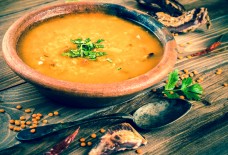Traditional Music in Morocco Series (Episode 6 of 7): Arab-Andalusian Classical Music
By: Claire Boyle / Arab America Contributing Writer
Introduction:
The country of Morocco is one of many cultures, beautiful architecture, amazing cities, and it also has its own unique musical and dance genres that are borne out of numerous traditions. These traditions stem from many influences including the cultures of the Amazigh, Arabs, Berbers, Gnawa, Islamic syncretism, Sufism, and Europeans, and so many more. Morocco has the world-famous traditions of Chaabi/Fusion, Gnawa music, Arab-Andalusian Classical, and so many other genres. This seven-part series will explore the cultural, geographic, and historical backgrounds of these amazing genres and readers will get to experience some samples of each musical style as well.
In this sixth installment, we will be traveling to Al-Andalus, also known as “Muslim Iberia,” in Spain, and then explore how this traditional music made its way to Morocco, specifically, to the cities of Tetouan, Meknes, Fes, and Rabat, to experience the exciting sounds and rhythms of Arab-Andalusian Classical Music.
Geographic Origins of Arab-Andalusian Classical Music:
So, where does the traditional music style of Arab-Andalusian Classical Music come from? In Morocco, it is most famously found in Telouet. The musical style traces its origins to the region of “North Africa in Tunisia, Algeria, and Morocco.” As for its geographic background, Arab-Andalusian Classical Music was originally carried over to the North Africa from Al-Andalus or Muslim Iberia, also known as Muslim Spain. The musical style is also very old being that it originated between the “9th to 15th centuries.”
Historical and Cultural Origins of Arab-Andalusian Classical Music:
Arab-Andalusian Classical Music is a well-known music genre throughout the North African world; however, did you know that Morocco has created its own entity of the style? There is a lot of history behind this beautiful musical style that is only seen in Morocco.
It is thought that Andalusian music came from Cordoba when it was ruled by Moorish Spain as early as the 800s. There is a fair amount of historical and cultural syncretism that occurred to create this amazing musical style. This is because the original inspirations from it came from a “Persian musician [who lived in] Iraq and combined it with Ziryab, an Arab poetic style, it then combined with Western musical influences, and it spread across both North Africa and Iberia.” Arab-Andalusian Classical Music then became ‘traded’ across the world as part of “cultural exchanges” that took place.
Did you know that Arab-Andalusian Classical Music also inspired many musical styles and instruments that some believe the Europeans created? All those things that came from Western music such as the “French troubadours, trouveres, and the English words of lute, guitar,” can trace their origins to the music by Arab-Andalusian Classical musicians! How cool is that?!
So, now that we know a bit about the geographic, historical, and cultural origins of Arab-Andalusian Classical Music, how is it performed?
In modern-day Morocco, the music has evolved to be performed into what are called, “nubas, which are the equivalent of a musical suite seen in Western music.”These suites can last a very long time, and it is rumored that sometimes they go on for more than “6 hours!” In a way, Arab-Andalusian Classical Music reminiscences the sounds of Indian Ragas a bit. The style is based on poetry, and thus that artform is very important in its performance as well. And, in Morocco, Arab-Andalusian Classical Music is either performed with vocals or with instruments. Typical instruments include the lute, guitar, or oud, drums, and even American jazz instruments such as “saxophones and clarinets” or folk instruments such as “banjos” are used as well to create a sort of fusion-type music. The very interesting thing about Arab-Andalusian Classical Music is that Moroccan Chaabi/Fusion music traces some of its historical lineage to the style that was originally found in Cordoba!
Samples of Arab-Andalusian Classical Music: A Traditional Music Style of Morocco:
So, it is now time to experience the wondrous genre of Arab-Andalusian Classical Music, it is one to surely get you on your feet as the rhythms are lively, stirring, and beautiful! If you listen closely, you’ll hear the many influences that this truly multicultural musical style espouses! Enjoy the samples below!
Conclusion:
Arab-Andalusian Classical Music is such a beautiful musical, dance, cultural, and religious style because its sounds are engaging, and its rhythms are rousing. Arab-Andalusian Classical Music also has a lot of cultural and geographic history behind it because of its origins in North Africa. The Arab-Andalusian musical style has a wonderful tradition because it is meant to bring people together and promote unity. These traditional musical styles elicit feelings of passion, and the reason listeners get these senses is because these sounds and rhythms are the amazing cultural expressions of humanity worldwide. It is the author’s hope that everyone got the opportunity to learn a little bit more about the enthralling style of Arab-Andalusian Classical Music, and perhaps, that you were able to tap your feet to the fun and relaxing sounds of traditional Moroccan music and dance!
This is the sixth episode in a series of seven about some of the traditional musical and (oftentimes) dance styles in Morocco. This series explores the cultural, historical, and geographic backgrounds of the musical and dance styles themselves and the group of people who brought these traditions to the forefront in Morocco. Keep an eye out for the final article featuring the enthralling sounds of Sufi music!
Check out Arab America’s blog here!









